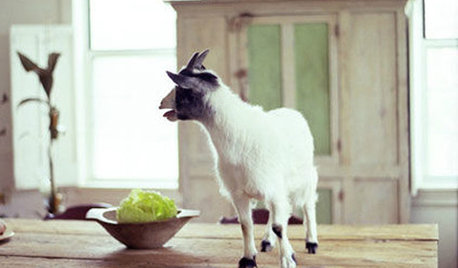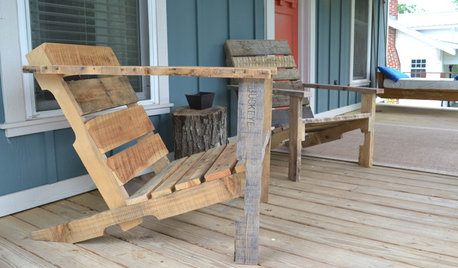green manure
sooners
14 years ago
Related Stories

GARDENING GUIDESThe Poop Scoop: Enrich Your Soil With Good Old Manure
Get over the ick factor already — this natural super-ingredient for soil has so many benefits, you'll wonder why you ever went chemical
Full Story
LIFEEasy Green: Modern Homesteaders Stake a Claim
With more options for raising chickens, growing edibles and keeping bees than ever, suburban and city folk are rediscovering a lost art
Full Story
GARDENING GUIDES10 Easy Edibles for First-Time Gardeners
Focus on these beginner-friendly vegetables, herbs, beans and salad greens to start a home farm with little fuss
Full Story
MOST POPULARHow to Start a Cool-Season Vegetable Garden
Late summer and late winter are good times to plan and plant cool-season crops like salad greens, spinach, beets, carrots and peas
Full Story
HEALTHY HOMEGet Cleaner Indoor Air Without Opening a Window
Mechanical ventilation can actually be better for your home than the natural kind. Find out the whys and hows here
Full Story
WOODWORKINGBuild Your Own Wooden Deck Chair From a Pallet — for $10!
Take the ecofriendly high road with a low-cost outdoor chair you make yourself
Full Story
EARTH DAYGrow a Beautiful Garden With Ecofriendly Greywater
Reducing home water waste means lower bills and a healthier planet. Here's how to set up a greywater home irrigation system that can help
Full Story
GARDENING GUIDESGardening Solutions for Heavy Clay Soils
What’s a gardener to do with soil that’s easily compacted and has poor drainage? Find out here
Full Story
GARDENING GUIDES15 Ideas to Try in Your Garden This Year
These gardening stories were tops among Houzz readers. Which ideas might you try this year?
Full Story
GARDENING GUIDESLush, Foodie Abundance in a Small Urban Garden
This modest backyard garden provides its owner with fruit and vegetables all year round, thanks to an innovative low-maintenance approach
Full StorySponsored
Central Ohio's Trusted Home Remodeler Specializing in Kitchens & Baths
More Discussions







christopherb
slowpoke_gardener
Related Professionals
Woodinville Landscape Architects & Landscape Designers · Downey Landscape Contractors · Eagle Landscape Contractors · Framingham Landscape Contractors · Haverhill Landscape Contractors · Lemay Landscape Contractors · Peachtree City Landscape Contractors · Suitland Landscape Contractors · Tavares Landscape Contractors · Quartz Hill Landscape Contractors · Hueytown Landscape Contractors · Raytown Landscape Contractors · American Fork Decks, Patios & Outdoor Enclosures · New Albany Decks, Patios & Outdoor Enclosures · Villa Park Decks, Patios & Outdoor Enclosuresshekanahh
slowpoke_gardener
shekanahh
christopherb
okiehobo
shekanahh
soonersOriginal Author
shekanahh
Okiedawn OK Zone 7
tulsacityfarmer
shekanahh
tulsacityfarmer
slowpoke_gardener
mulberryknob
shekanahh
katrina1
shekanahh
tulsacityfarmer
christopherb